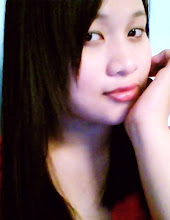Video conferencing is a communications technology that integrates video and voice to connect remote users with each other as if they were in the same room. Each user needs a computer, webcam, microphone, and broadband internet connection for participation in video conferencing. Users see and hear each other in real time, allowing natural conversations not possible with voice-only communications technology.
Communications companies have been dabbling in video conferencing technology since as early as the late 50s, but it took the advent of broadband internet and affordable web cameras (late 90s) for video conferencing to really take off. Good bandwidth is necessary for high-fidelity streaming video and voice. Video conferencing took a serious step into mass use with the release of Microsoft Net meeting 3.0 in 1999. Now there are dozens of software vendors marketing video conferencing software and a number of investors interested in bringing video conferencing to mobile devices.
Overview
In its most basic form video conferencing is a telephone call where participants can see each other. It also allows people to share files and data, so that it is easy to hold presentations and review documents. It allows individuals or groups to meet in real time without the need for costly and time consuming travel; its uses extend to worldwide interviewing for research and recruitment, multi-site group work and distance learning.
ISDN – (Integrated Services Digital Network), is an international standard for sending voice, video and data simultaneously across the world over digital telephone lines or normal telephone wires.
IP – (Internet Protocol), uses computer networks to send the information rather than telephone lines.
IP – (Internet Protocol), uses computer networks to send the information rather than telephone lines.
As ISDN connections use telephone networks there is an associated cost for the call, the price of which will depend on where you are calling and the quality of the connection. IP connections are free as the call is connected via the university computer network.
Video Conferencing Facilities
Information Services also provides video conferencing facilities at these locations:
- Block F2, room F2B13, Video Conference room, IP and ISDN BRI (6 channels connections).
- Block A, room AC02, Executive Meeting room, IP connections only.
- Block F3, room F3A12, Lecture Theater 1 room, IP connections only.
- KL Teaching Center, room KL04, Boardroom, ISDN BRI (6 channels) only.
- Block F2, room F2B10c, Audio Conference.
- Block D, room DB38, Engineering Meeting Room, IP only.
Bookings for all Video Conference Rooms should be made at least 2 days prior to the actual event to avoid clashes with other video or non-video meetings. Bookings can be made through

